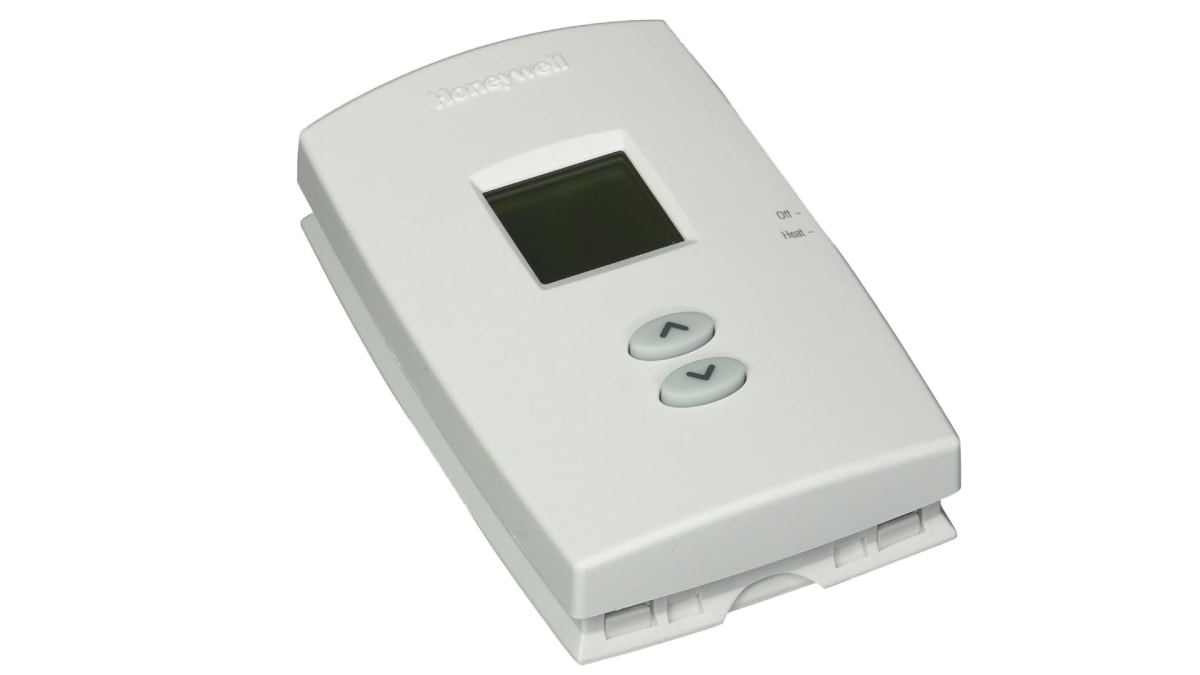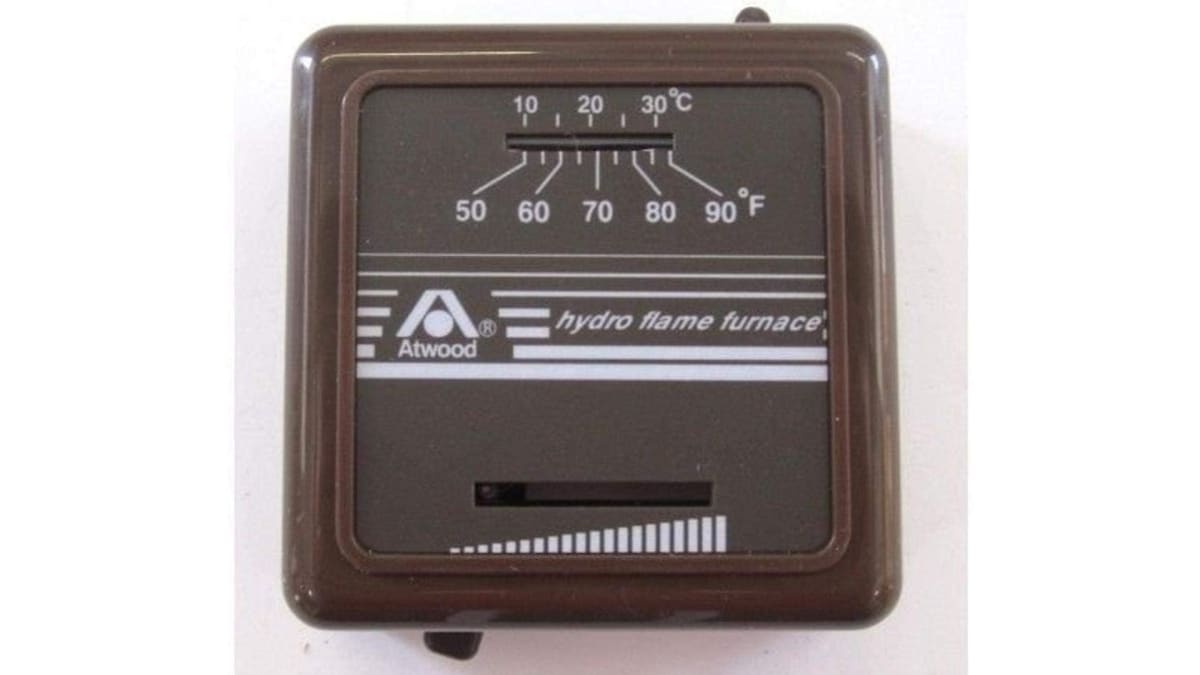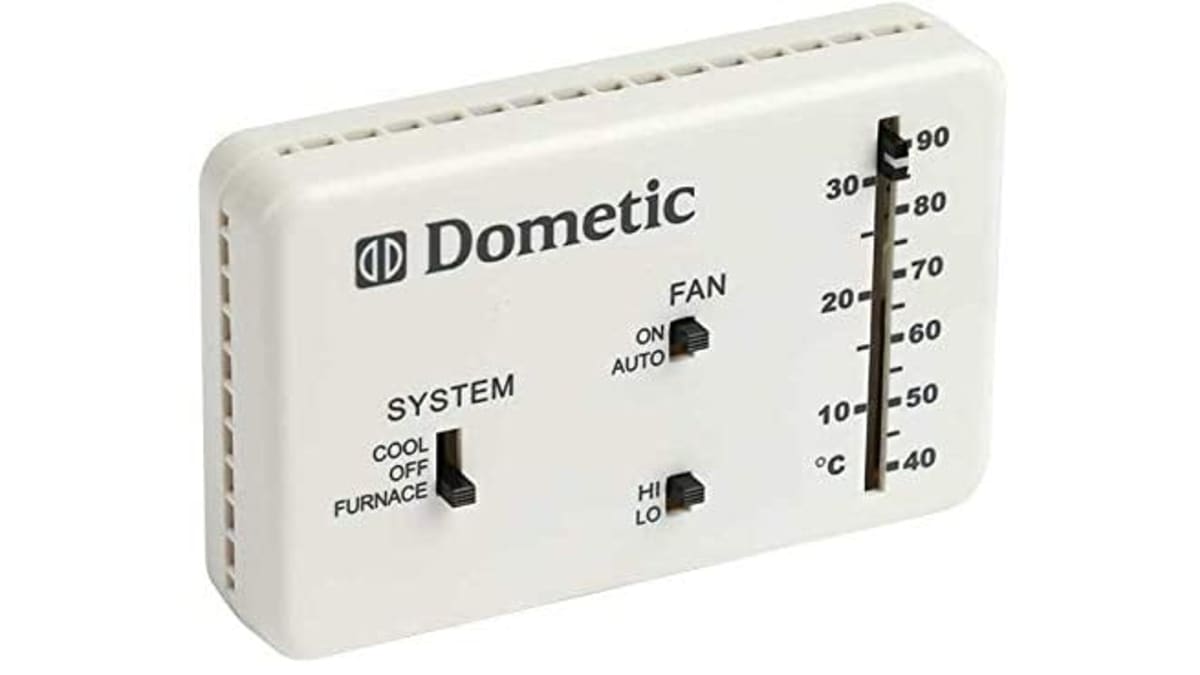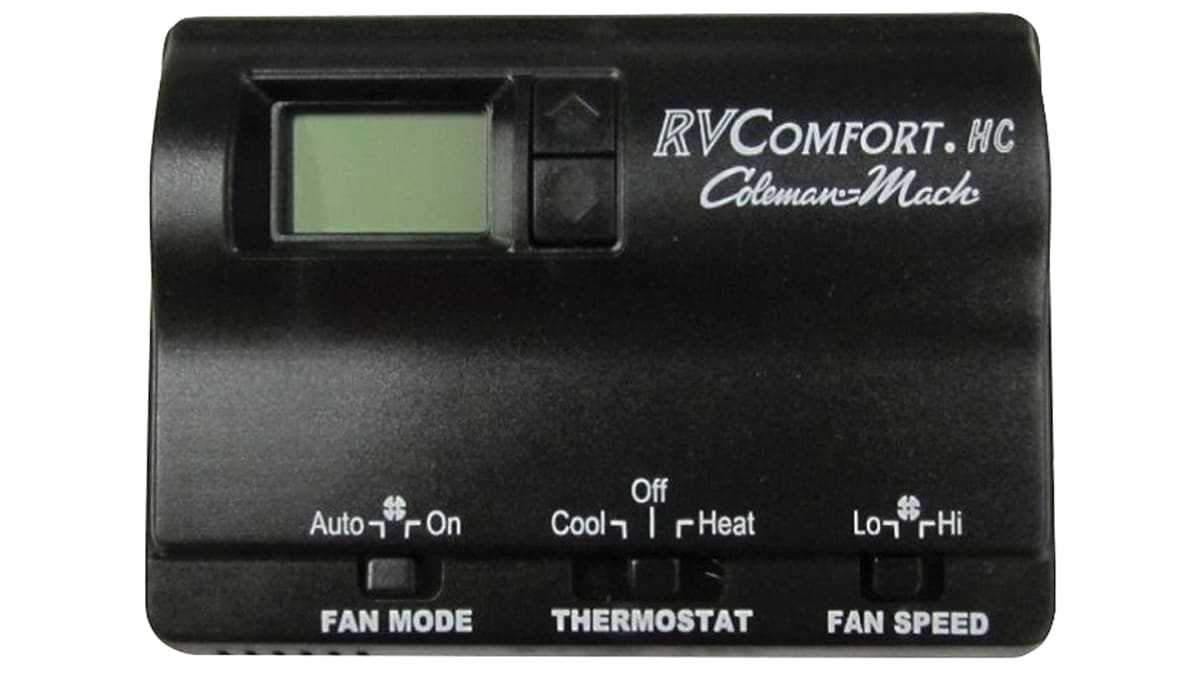Autoblog is not affiliated with the brands featured in our articles, but when you make a purchase through links on our site we may earn a commission.
Your RV is your home away from home, and keeping it just the right temperature can make it a lot cozier. Check out these RV thermostats for your recreational vehicle. Whether you call your RV home or simply take it out for weekend trips, it’s hard to deny that one of the most important systems within the vehicle is temperature control. It lets you beat the heat with an air conditioner or stay warm during the night with the help of a radiator or floor heating. These aspects of the RV are often overlooked, but once your thermostat breaks you’ll realize how important they truly are.
Thankfully, a broken thermostat isn’t the end of the world. With a great RV thermostat, you can easily check the temperature of your vehicle and change it whenever you like. So whether you’re upgrading an existing thermostat or merely replacing a broken one, these RV thermostats can help keep you comfortable when you’re out and about exploring the world.
The best RV thermostats of 2022
Honeywell TH1100DV1000: our choice
We’ve looked at quite a few RV thermostats, and this one by Honeywell is our top pick.
It has a battery-powered digital interface that is easy to read, even when the lights are out at night. The controls are also incredibly simple — with one button to increase the temperature and one to decrease it, even your children will be able to use it (if you let them, that is).
But that’s not all you can do with this thermostat. Though you might not notice them at first, there are two switches on the device’s right side: one that toggles the fan mode and another that toggles heat, cold and off modes. This setup consolidates all the important controls in one convenient location.
Pros
- Backlit digital display
- Easy-to-use buttons
- Simple installation process
Cons
- Requires occasional battery replacement
Hydro Flame Corp 32300: also consider
If you live in a colder climate, then you probably won’t have much need for cooling and air conditioners.
Even if your RV comes with cooling, you may not need to use it depending on the current season and weather. If you find yourself blasting the heat more often than the air, then this thermostat could be pretty useful.
This Hydro Flame thermostat is fairly straightforward, with a slider to change the temperature as needed. Its layout can take some time to get used to, especially since its design is a little dated compared to more modern thermostats, but it’s quite reliable. Once you overcome this hurdle, though, you’ll find it’s a breeze to operate.
Pros
- Great for heating systems
- Simple, straightforward controls
- Easy to install
Cons
- Somewhat confusing layout
DOMETIC 3106995.032 Analog Thermostat: another great option
Aside from heat pumps, another way to keep yourself warm is with the help of a furnace.
Powered by fuel such as propane, furnaces are a lot more traditional than modern heat pumps, but they come with the advantage of not having to rely on electricity. This analog thermostat is a great choice if you’ve got an older RV with a furnace system in addition to a cooling system.
The layout of this thermostat is pretty straightforward. On the left, you have the system switch that controls which mode the RV is currently using. In the middle, you’ll find the fan settings as well as a High/Low option for either the cooling or the fans. Finally, a slider helps regulate the temperature depending on which mode you’re using, and it supports both Fahrenheit and Celsius.
Pros
- Supports furnace systems
- Simple control layout
- Durable and built to last
Cons
- Temperature display isn’t backlit
TycoonWon RV Thermostat: budget option
You know the thermostat that we just reviewed? Well it’s back, but this time under another brand name.
The TycoonWon RV thermostat looks exactly like the DOMETIC thermostat, and that’s because it serves as a replacement for systems that use the DOMETIC model. Everything, from the layout to the design, is the same with this one.
So why pick a replacement over the real thing? The answer is simple: It’s cheaper. In fact, this replacement thermostat is the cheapest one on our list, coming in at just under $20. It’s a great deal considering most thermostats (even older ones) can often cost upwards of $30. While you might hesitate to spend money on something other than the genuine article, your wallet will thank you, and so will your family when you’re out on your next RV trip.
Pros
- Affordable alternative to DOMETIC thermostats
- Shares similar layout
- Can also replace the Duo Therm
Cons
- Difficult to wire
Coleman 83303862 Digital Thermostat: high quality
This is the premier thermostat on our list, and it’s also the most expensive.
At well over $100 it might seem like a big investment, but for this price you’re getting reliability and durability. It features a small digital display to show the temperature of the system, with buttons beside it to adjust said temperature.
Below the temperature monitor are a few more things. There’s a thermostat switch that works with Heat/Cold systems, and there are also switches for both fan mode and speed. The price is steep, but the thermostat itself is quality, so count it as an investment for the future.
Pros
- Designed for durability
- Easy-to-access controls
- Simple installation process
Cons
- High price point
Buying guide: RV thermostats
If you want to fix or replace your RV’s old thermostat, here’s what you need to know beforehand.
What are RV thermostats?
A thermostat is a device usually found in the center of a home that helps to regulate its temperature. They’re commonly found in parts of the world where this is necessary due to changing weather conditions throughout the year.
RV thermostats are essentially the same type of device, except they’re used in RVs or other recreational vehicles. These thermostats are generally simpler than their home counterparts, as the heating and cooling systems in RVs are more basic and smaller in scale, and are compatible with different kinds of systems.
What are the different kinds of RV thermostats?
Heat-only
As the name suggests, heat-only thermostats work only with electric heat pumps. These thermostats will usually have a slider for temperature as well as a temperature gauge that shows the current temperature that the system is aiming to produce for the RV.
This kind of thermostat is pretty niche and is not often used. This is because it’s heat-only, which means that you can’t monitor or control your air conditioner system in the same device. With this in mind, you’ll generally be better off getting a cool/heat thermostat instead, as these thermostats allow you to consolidate all your controls in one convenient place.
Cool/furnace
Cool/furnace thermostats are typically found in older RV models, though you may find them in newer releases as well. These thermostats control both the cooling system and the built-in furnace system, which runs on propane and helps keep the inside warm. These systems often have controls for both systems that are combined into one or two sliders for convenience.
The issue with cool/furnace systems is that they don’t work with modern electric heat pumps. For those who have RVs with heat pumps, you’ll want a thermostat that supports that sort of heating system instead.
Cool/heat
Cool/heat thermostats can refer either to devices that support both air conditioning and electric heat pumps or devices that support air conditioning and both heating system types (electric and propane). This can sometimes be a little confusing, so always be sure to check the product page as well as reviews before buying.
Digital/electric thermostats
Finally, let’s take a look at digital and electric thermostats, the modern alternative to traditional analog devices. Digital thermostats provide much more accurate temperature readings. You won’t have to eyeball the temperature gauge when the display will show you the exact value you want to know.
Another advantage of digital systems is that they’re very simple, compact and easy to operate. You won’t have to be careful when using the temperature slider as you can set the exact temperature with the press of a button. It’s also easier for anybody to pick up and use, as the controls are much more intuitive than older analog designs.
If there’s one drawback to digital thermostats, it’s that they require a battery to work. Without a battery you won’t be able to control the thermostat at all, and this can spell disaster if the temperature reaches extremes. Because of this, make sure to keep spare batteries nearby in case of emergency.
When should I replace my RV thermostat?
When the temperature reading isn’t accurate
This can be hard to tell at first, especially if the reading is only slightly off. Over time, though, the thermostat’s readings may become more and more inaccurate, and eventually you’ll be able to tell that something’s wrong. Depending on the type of offset or inaccuracy you might still be able to use the thermostat just fine, but random and unpredictable inaccuracies can be very dangerous if you plan on using your RV thermostat regularly.
When the buttons and sliders are starting to break off
Thermostats, and analog thermostats especially, will slowly develop wear and tear over time. At some point the buttons, switches and sliders will pop or snap off, especially if you apply too much force to the controls at the wrong time.
If you’re thinking of replacing your thermostat because of this, consider getting something that has controls that don’t break easily, such as a digital thermostat.
You want an upgrade
We’ve all been there– your RV’s completely fine, no issues at all, yet you have a strange tingling sensation, a feeling that you want to make your RV even better. RV’s are a second home for a lot of people after all, and some even treat it as their first. Giving your RV the occasional upgrade is never a bad thing, especially if it can improve your quality of life.
How much do RV thermostats cost?
Depending on the type of thermostat, you can expect to spend a decent amount of money. The cheapest thermostats will go for around $20, while some of the higher-quality ones start at around the $30 or $40 mark.
This doesn’t mean that you won’t find thermostats beyond $100, however. There are many thermostats above this mark, and they’re usually official models or ones with superior quality and durability.
RV thermostat FAQs
Q: Do all RV thermostats work with all heating systems?
No. Some thermostats only support furnace heating systems, whereas others only support electric heating systems. Some also support both.
Q: Can RV thermostats break?
Yes, unfortunately they can. Over time the components of an RV thermostat will break down, and this will eventually result in the need for a replacement.
Q: Are RV thermostats necessary?
As they both show the current temperature and allow you to control the heating and cooling systems in your RV, thermostats are arguably one of the most important parts of your vehicle. Without one, it would probably be pretty tough to enjoy yourself inside your RV.
Source: www.autoblog.com





